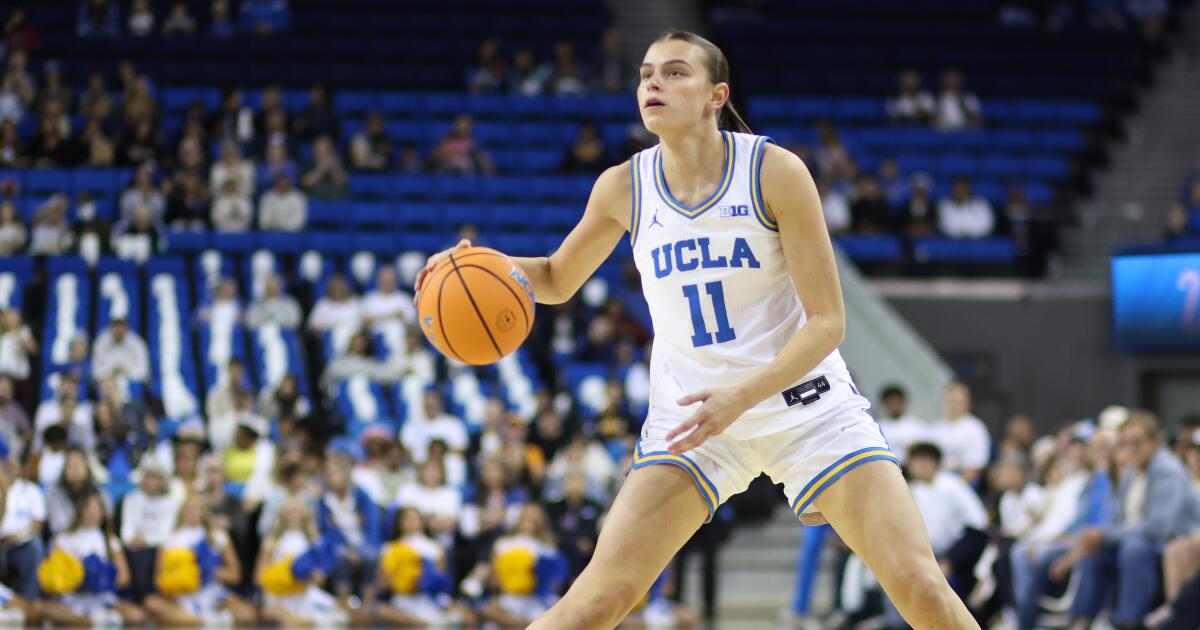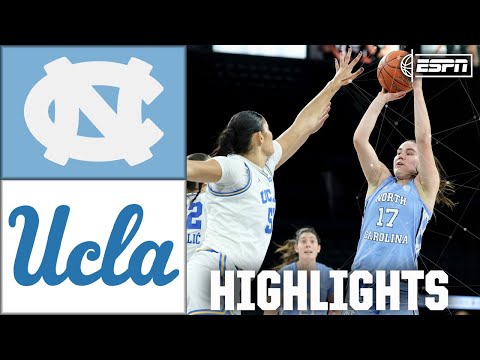Gabriela Jaquez scores 29 points as No. 3 UCLA defeats No. 14 Tennessee
It might seem hard to imagine, watching the pure stroke and true form that provides Gabriela Jaquez such steady success from beyond the three-point arc.
But there was a time when Jaquez’s long-range shooting was the part of her game that gave UCLA women’s basketball coach Cori Close hesitancy in offering a scholarship.
Eager to prove herself, Jaquez tirelessly toiled at a park during the pandemic, getting up one shot after another. She joined a club team based in Oakland, flying north twice a month for weekend practices.
Good thing she stuck with it.
Jaquez earned that scholarship and is fully flourishing in her senior season, her all-around brilliance powering the No. 3 Bruins to a 99-77 victory over No. 14 Tennessee on Sunday afternoon before a small but spirited crowd at Pauley Pavilion.
Jaquez scored 19 of her 29 points in the first half, leading her team to a 10-point advantage that grew to as many as 23 points in the second half. Showing her continued emergence as a knockdown shooter, Jaquez made 10 of 14 shots, including five of six three-pointers, and is now shooting a career-high 48.6% from beyond the arc this season. That’s up from 34.8% as a junior and 24.4% as a sophomore.
Beyond all the work she’s put in with coaches and trainers, Jaquez said, a change over the summer sparked her recent success.
“Something just kind of clicked in my head, like where I want my shooting pocket to be and how I want it to feel,” Jaquez said, “and I think that’s the difference right there.”
Her three-pointer from the corner late in the third quarter pushed UCLA (8-1) into a 71-53 lead and prompted roars after Jaquez held the form on her follow-through as the Volunteers (5-2) called a timeout in a futile attempt to stop the Bruins’ momentum.
Tennessee momentarily pulled within 10 points early in the fourth quarter before UCLA rolled off the next eight points, Jaquez contributing with a Euro step layup in transition. She departed with 2½ minutes to go to a standing ovation.
“She’s such an underrated player and she just makes things happen. She’s always moving,” Tennessee coach Kim Caldwell said. “You can’t guard her and take one second off or she will capitalize.”
Even surrounded by so much talent, Jaquez could make a strong case for being UCLA’s best player so far this season. She does a lot more than score, fighting for gritty rebounds, throwing selfless passes and steadying teammates with her presence.
“She just finds warrior ways to contribute and make winning plays,” Close said. “And the first year it looked like cutting and running the fast break and playing the four for us a lot and doing the dirty work kind of things and then each year, we’ve seen her add to her toolbox.”
Jaquez had plenty of help in helping the Bruins post a statement victory that prompted Caldwell to call UCLA “Final Four-ready.” Point guard Kiki Rice contributed 20 points and 11 rebounds, shooting guard Gianna Kneepkens logged 19 points and point guard Charlisse Leger-Walker added seven points and 11 assists. Adding an infusion of energy off the bench, forward Angela Dugalic made six of seven shots on the way to 14 points.
Wearing a white sleeve over her injured left arm, Bruins center Lauren Betts didn’t take long to make an impact in her return from a one-game absence. On the game’s opening possession, Betts received a pass, took one dribble and pivoted to bank in a jump hook for the first basket.
Betts finished with seven points, four rebounds and two blocks.
Tennessee was led by forward Janiah Barker, the transfer from UCLA who kept things close with a flurry of baskets in the first half on the same day she received her Final Four ring and a note of gratitude from Close. Barker, however, didn’t regard Close as warmly and refused to shake her hand in the postgame handshake line. But Barker couldn’t sustain her early pace and finished with 25 points for the Volunteers, who shot 40.8% to the Bruins’ 58.5%. UCLA also made 10 of 17 three-pointers (58.8%).



